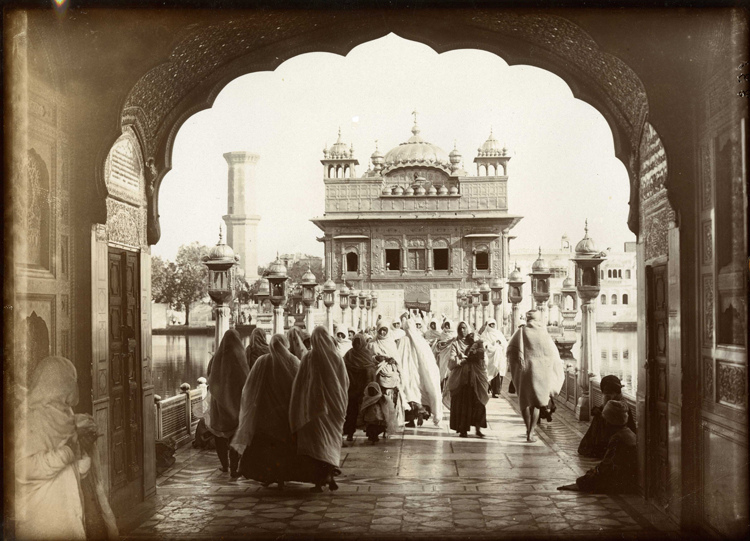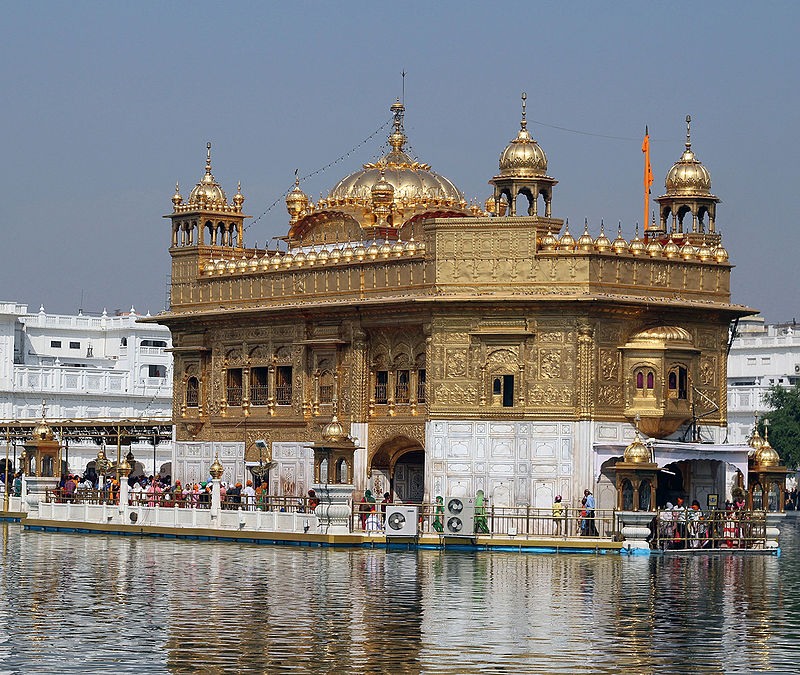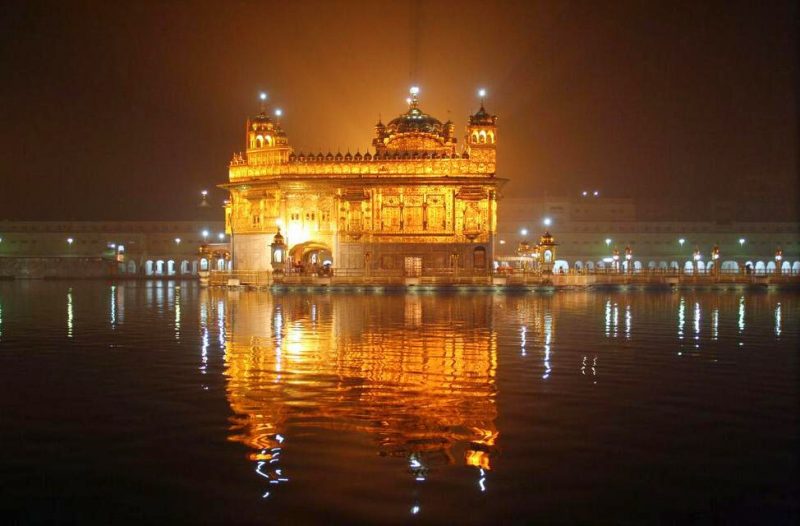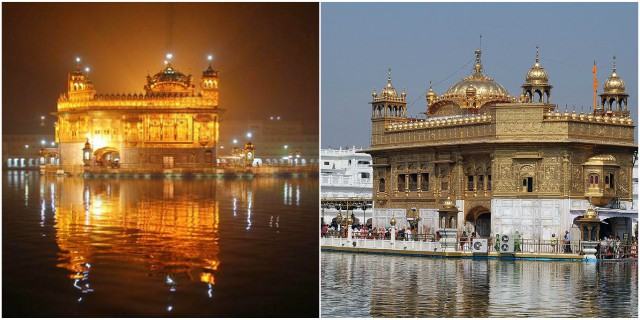Sri Harmandir Sahib, known as the “Golden Temple” is located in the city of Amritsar, India. Situated on the north-western border of India, Amritsar is one of Punjab State’s principal cities, dating back in history over 400 years. The city is most well known for the world famous Golden Temple, the seat of Sikh religion.
The fifth Sikh Guru, Guru Arjan designed the Golden Temple, and construction of it started in 1589 and was completed in 1601. The temple itself is 40.5ft. square, with a door on each of the East, West, North, and South sides. Its architecture represents a unique harmony between the Muslim and Hindu ways of construction, and is considered to be among the best architectural specimens of the world.

More fascinating is the fact the Temple’s kitchen serves up to 40,000 hungry people vegetarian meals 24 hours a day, every day. On weekends and holidays, the crowd at the Golden Temple can reach more than 100,000. This act of feeding has been ongoing since Sikhism began in 1469.
Langar is the term used in the Sikh religion for the common kitchen here, and food is served to all the visitors, regardless of faith, religion or background. The concept of the Langar was founded by Guru Nanak. All Sikh temples have one and serve free meals to pilgrims, but there is nothing quite like the Golden Temple’s Langar, the largest free kitchen in the world.

The Golden Temple draws more than 100,000 visitors a day, making it an even more popular destination than the Taj Mahal.
Over 90% of the job is done by volunteers, and the other 10% are staff paid to manage and coordinate the program. Volunteers show up every day to prepare the food, which is commonly donated to the temple or purchased with donations. On an average, 7,000 kilograms of wheat flour, 1,200 kilograms of rice, 1,300 kilograms of lentils, and 500 kilograms of ghee (clarified butter) is used in preparing the meal every day. All food served in the Golden Temple is vegetarian.

Before the pilgrims eat they must put a provided orange scarf on their head, and check their shoes at one of the many windows where they are temporarily kept. Entering the Temple with a covered head and bare feet shows respect to the Guru.
Next they will stand in line to take their food plates and, finally, they will move to the large marble hall where they are seated on the floor and served food by volunteers.
The kitchen never runs out of food, even when more than 100,000 people visit to eat. Once people finish their meal the process starts from the beginning.
